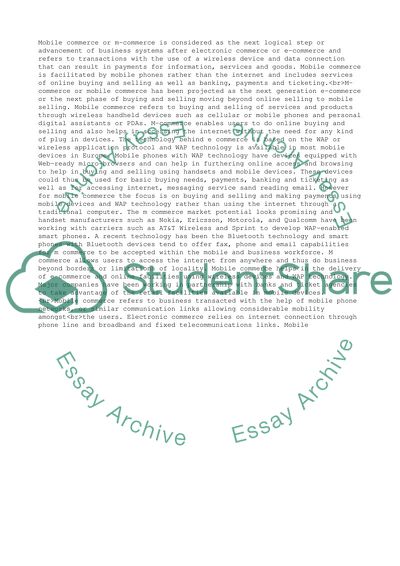Cite this document
(“Mobile Commerce Assignment Example | Topics and Well Written Essays - 5500 words”, n.d.)
Mobile Commerce Assignment Example | Topics and Well Written Essays - 5500 words. Retrieved from https://studentshare.org/business/1520530-mobile-commerce
Mobile Commerce Assignment Example | Topics and Well Written Essays - 5500 words. Retrieved from https://studentshare.org/business/1520530-mobile-commerce
(Mobile Commerce Assignment Example | Topics and Well Written Essays - 5500 Words)
Mobile Commerce Assignment Example | Topics and Well Written Essays - 5500 Words. https://studentshare.org/business/1520530-mobile-commerce.
Mobile Commerce Assignment Example | Topics and Well Written Essays - 5500 Words. https://studentshare.org/business/1520530-mobile-commerce.
“Mobile Commerce Assignment Example | Topics and Well Written Essays - 5500 Words”, n.d. https://studentshare.org/business/1520530-mobile-commerce.


